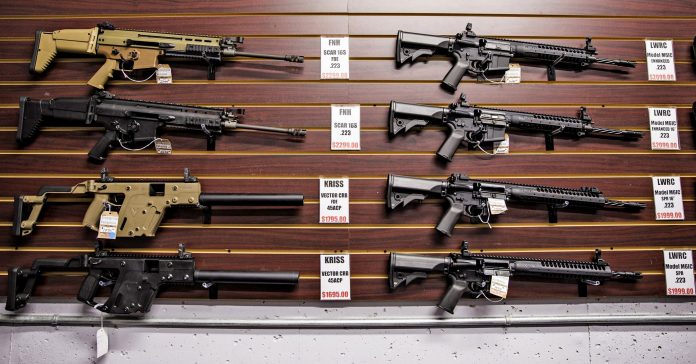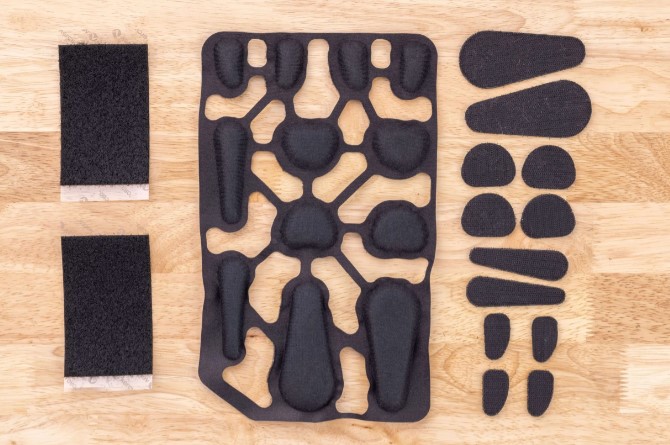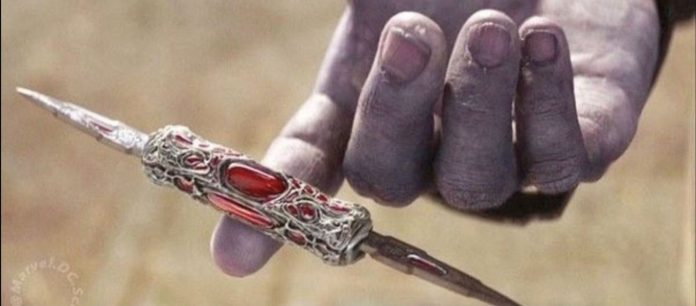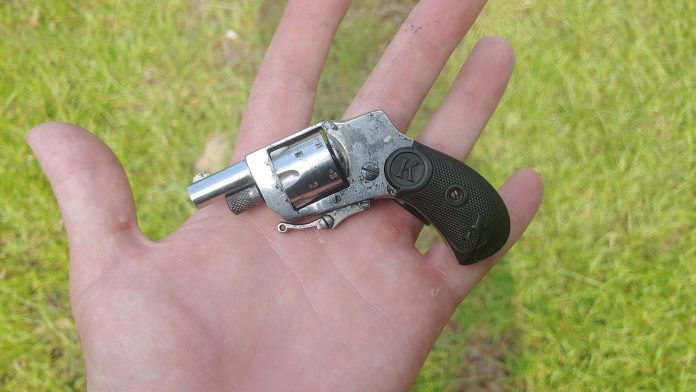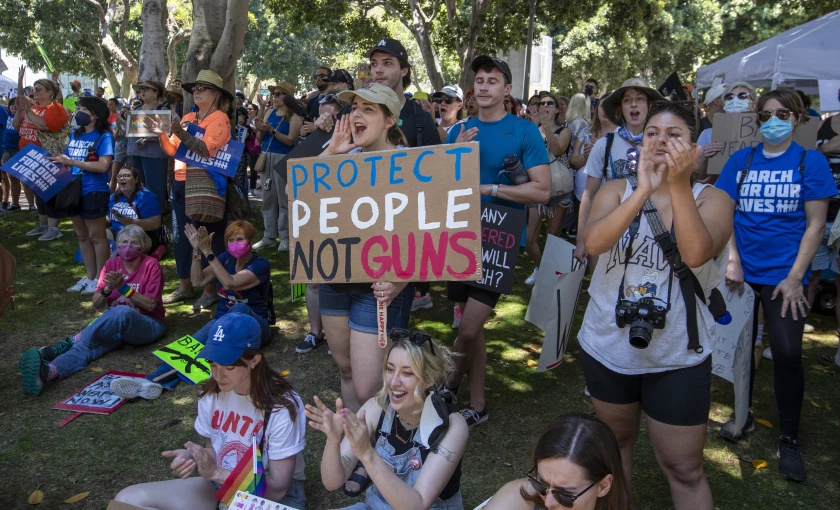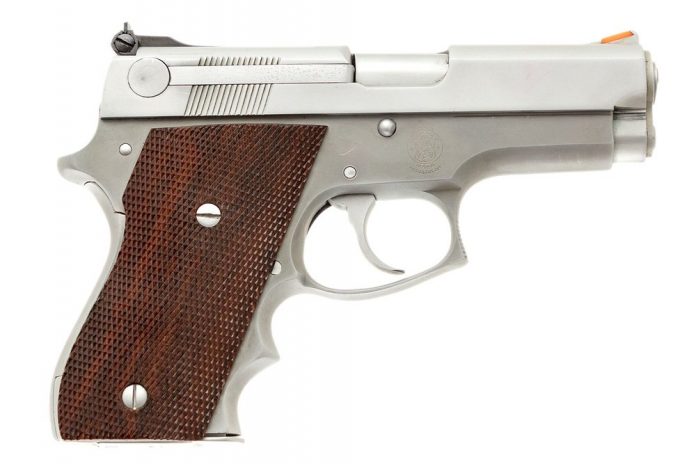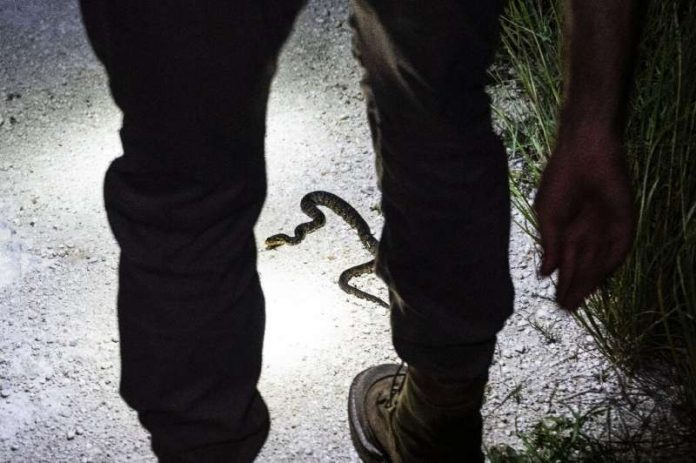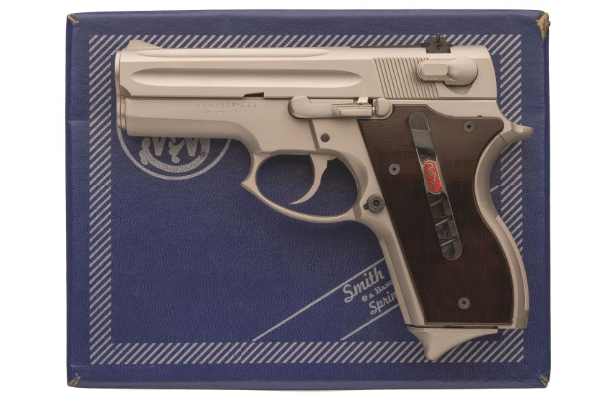It hasn’t even been 3 whole months since the Bruen ruling took the legs out from under most of the gun control objectives of organizations like MDA, the Brady Campaign, and Giffords. In that brief span, it seems like the gun-grabbing crowd continues to throw AWB (Assault Weapons Ban) and concealed carry bills that Bruen would seem to obviously preclude at the wall, hoping anything will stick. Why they want to get as many nails in their own coffin as quickly as possible is anyone’s guess, but you love to see it. NY and CA have garnered the most attention for their attempts to regulate shall-issue concealed carry into oblivion, generating an absurd circus of requirements, restrictions, and obligations on legal concealed carriers.
Colorado seems to want to join the club, getting in line behind California and New York to eventually get slapped by SCOTUS for their blatantly unconstitutional laws. Two such bills recently passed on Boulder and Superior county have had Temporary Restraining Orders placed on them by judges in a flurry of lawsuits filed by Rocky Mountain Gun Owners. The prognosis for these cases seems more and more to be in favor of liberty, especially for wildly onerous concealed carry regulation and of course the much vaunted AWB.
The anti-gun orgs seem to want to use Bruen to disarm it, claiming that what Clarence Thomas meant when he said that regulations on especially “dangerous” or “unusual” weapons, was AR-15s. You know, the most commonly purchased and owned longarm in the country? Somehow they are supposed to be unusual, if you listen to the gun-grabbers. While this interpretation could fall either way for state or federal judges, its impressively unlikely that SCOTUS would agree with any AWB, which effectively smothers these efforts in the cradle, no matter how long their zombie corpses wander the legal landscape.
Whether these recent middle fingers to Bruen die in lower courts, or make it to SCOTUS, it seems more and more likely that the anti-gun lobby is eagerly shifting into 6th gear as they speed toward a brick wall.
AWB Laws Taking Fire in Colorado
HUXWRX Safety Co. is now on Expert Voice
Just when we thought Expert Voice was a lost cause due to more and more brands being removed off the special pricing list they redeem themselves with adding suppressors!
Expert Voice, a well known website that offers deals for industry professionals on various brands is now offering the previous OSS now HUXWRX silencers we know and trust for 30% off MSRP.

The Products Available
In short, it looks like almost everything that is currently listed on the HUXWRX website.
This includes Suppressors, Accessories such as muzzle devices, and various merchandise.
Expert Voice HUXWRX Product List
So What’s the Catch?
In the past Expert Voice is known to not allow returns of products bought off their website. Due to a suppressor being a very different item versus say shoes, tents, etc, there may be different rules when it comes to this. Currently the website lists standard restricted states and FFL transfer rules. If you want to be sure how it will work when it comes to defects etc, it may go straight through HUXWRX but it is recommended to give expert voice a shout just to be sure in case something does arise.
Who Can Qualify for Expert Voice?
After checking the website for the latest in who can qualify it looks like almost anyone can have access to these deals. Previously they would ask for military, LE, first responder proof. While they still do that they also allow company email addresses with any company in any industry almost. They also state that even if you don’t have a company affiliated email to prove you are working with them a picture will suffice. Also to all the “influencers” out there. Look what they have to say about you.
“If you’re an influencer, pro athlete, personality, or just someone who talks to people every day about the products you love, you still can get in. Submit an application to verify your status.”-Expert Voice
See here to see who qualifies and sign up. The worst that can happen is they respond with a no.
Below is how the affiliations with Expert Voice works to get access to certain brands.
NEW RELEASE: PHlster Modular Holster Wedge Kit
PHlster, a company known for rethinking the concealment game and educating us about it with each launch. First came the PHlster Floodlight, an inside the waistband universal holster that retains based off of the light not the gun. Then came the Enigma, a holster that wears independent of your clothing and now has a whole community of Yoga Pant and Enigma wearers. Now, the PHlster Modular Holster Wedge Kit.
Why the Need?
We all know the pain of finding the right wedge when it comes to holsters. No one wedge will work with all holsters and sometimes it takes 6 tries to find that certain wedge that does work. Sometimes it even leads to us building our own out of yoga blocks. (PHlster released a self help video of this too) It could mean three different orders, three different shipping payments, and a plastic bin of wedges before finding the right wedge for that one holster. Truly frustrating..
PHlster solved these issues with giving us a MODULAR wedge KIT. Modular, meaning they can be stacked, stuck side by side, or switched out. Kit, meaning there is more than one. FINALLY RIGHT?! An order that can be placed once that comes with twelve wedge modules.
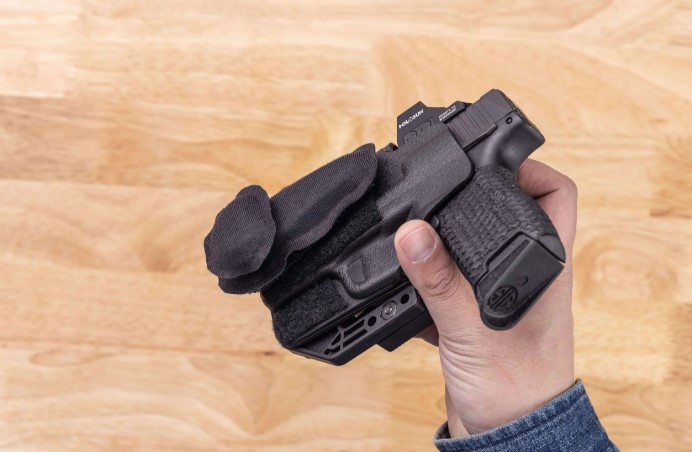
The Kit
“The Modular Holster Wedge Kit provides a variety of stackable shapes which you can use in any combination or configuration to quickly and easily get the comfort and concealment results you need, with no permanent modifications to the holster.
Each kit comes with two base pads, two spines, four half-circles, and four “bean” shapes, pre-cut hook tabs for each shape, and two pieces of adhesive loop. For a total of 12 wedge modules, this is enough to adjust two holsters, with enough modules and material left over to fine tune an extra magazine carrier or knife sheath.”-PHlster
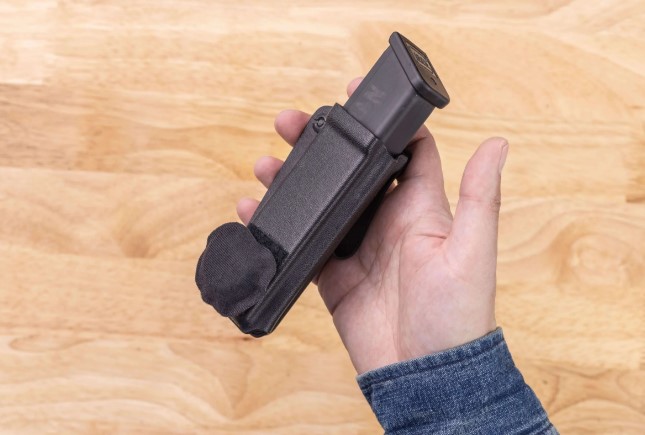
The Material
“Each module contains a proprietary viscoelastic foam encapsulated in stretchy plastic, RF welded in a fabric cover. Based on the technology from state-of-the-art ballistic helmet pads, the Modular Holster Wedges are extremely comfortable, retain their shape, reject sweat and moisture, and reduce uncomfortable rubbing and skin shear compared to other wedge materials. The fabric outer layer glides over the foam capsule and feels more like a firm gel than the typical foam wedge. “-PHlster
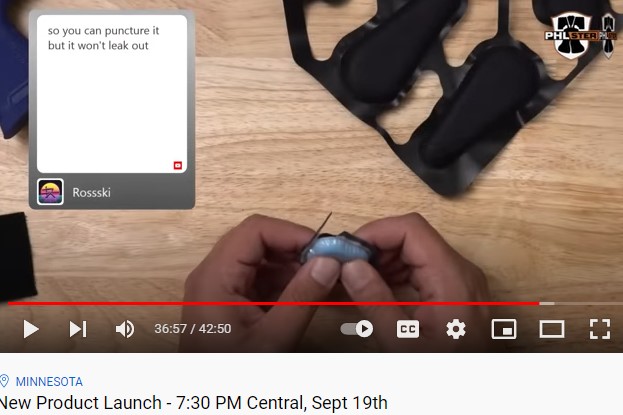
Basing off experience of helmet pads and wedges ordered online, there truly is a difference to the moldable shape of each. Wedges are often of a foam type that is stiff and will not conform to your body and can cause some annoying hot spots. However helmet pads do have more of a gel feel and will shape to your head. The material of this wedge kit has the conformity but still the strength to retain it’s shape. The sweat and moisture rejection is an added plus.
The Pricing and Availability
Currently in stock on PHLster.com the wedge kit prices at $44.00 for a kit of 12 wedge modules and 2 pieces of adhesive loop.
Note: “The Modular Holster Wedge Kit has a 12 month warranty. Think of them like underwear and expect to refresh or replace them after some reasonable period of time. If you need to return your kit for reasons other than defect or error, please keep in mind that kits that have been cut and worn are not eligible for a return. If you need individual assistance getting your kit dialed in, please email us at info@phlsterholsters.com or join the PHLster Concealment Workshop Facebook Group.“
The Product Launch
Below is a live stream of two days ago when the product was launched. Jon and Sarah Hauptman go over the product pretty in depth and answer questions.
Better Style = Better Concealment
Men, especially “alpha” or “macho” men reject the idea that there’s value in understanding style as somehow frivolous or unmasculine.
What if I told you that there was a tactical reason to improve your understanding of clothes?
This extends well past the tropes of “shoot me first” vests and 5.11 pants. The truth is, once you understand how clothing is supposed to fit and drape, it’s a lot easier to pick out irregularities.
While some people will use this knowledge as an excuse to judge people, you can leverage it to your advantage.
Firstly, how someone dresses is a form of communication. If you’re in tune with stylistic cues, it’s easier to identify if someone’s behavior doesn’t jive with their attire. Here’s a prime example:
Sometimes these irregularities can be obvious, like mirror-polished wingtips on a convict, or sometimes they can be more subtle.
I’ll draw another example from my trip to Las Vegas:
During that trip, we went and saw Penn & Teller, and they were really good seats. We were maybe 6 rows from the stage, tops. Well from that distance, when Penn & Teller took the stage and started going their act, I was able to see every gimmick and hideaway that they had built into their stage costumes.
The show was still incredibly entertaining, but it definitely took a little bit of the wonder out of things. It was that much more obvious how they did a given trick.
Penn talks about how magic is, at its core, criminal. The only difference is that the “victim” a) knows what they’re in for and b) the “bad guy” isn’t doing it for nefarious purposes. That said, magicians and criminals use a lot of the same tactics. Misdirection, social engineering, and so on.
We all like to joke about the “grey man uniform” for concealed carriers, but when it comes to the criminal side of the equation, they’re much better at it, and have had far more practice, because they’re under an umbrella of much more severe consequence for getting it wrong.
So why not give yourself as much of an advantage as possible? With everyone striving to be stronger, faster, and more accurate than the bad guys, why not also develop a skill set that gives you x-ray vision as well? At best, you can avoid the problem entirely, and at worst you have more advanced warning before things kick off.
Seems like a no-brainer to me.
Maintain Balance
Whether it’s Travis Bickle’s preparations in Taxi Driver, Vin Deisel’s “500 Street Fights” monologue from Knockaround Guys there are plenty of examples of how the pursuit of capability can overrun the rest of your life, and become this all-consuming initiative that can consume the very life you’re trying to defend.
It’s important to keep these things in perspective because, especially for those of us that have managed to get this far in life without having been directly impacted by criminal violence, there will always be this nagging doubt of “how ready am I really?”. This doubt, combined with the pervasive mantra of “good enough is never good enough” can drive someone into an unhealthy mindset if it’s not tempered correctly, and negatively impact your quality of life.
I’ll use examples from my own life:
Example 1:
For my 30th birthday, my wife took me to Las Vegas for the first time. We hit a bunch of great restaurants, I had a lucky streak at the tables as a first-time player, and we caught a couple of shows. Since we don’t visit Vegas regularly, she also wanted to take the opportunity to catch Britney Spears’ show back when she had a residency. It was the only thing she really wanted to do while we were there, so of course, I obliged.
Now, as with many young self-defenders of the era, I didn’t like crowds and I didn’t like that many people being so close to me. It wasn’t really a problem before or during the show, but afterward, when it let out I found myself in the middle of a sea of bodies, and it resulted in what I can only assume was an anxiety attack. I was overwhelmed with a sense of dread, even though I was in absolutely no danger. But “you’re not supposed to let people get close to you” and all those other cliches had conditioned me to fear this situation, so my system responded accordingly.
Example 2:
I was friends with several very capable shooters who would describe themselves as “ok” or “passable” in terms of their shooting ability. The problem with this was that they simultaneously were putting out content of them shooting at a level way higher than I could perform. This created a serious disconnect in my mind. I remember thinking to myself “If these guys are ‘just ok’ and they’re lightyears ahead of me in terms of shooting ability, then what does that mean for me? Do I even have a fighting chance, or am I as good as dead?” At that point in my development, I’d had maybe 100 hours or so of open enrollment training.
I reached out to another friend who I knew had first-hand experience with criminal violence, and could offer me a realistic perspective. His advice to me essentially was “You don’t get to pick the day or the enemy. If your number is up, can you die knowing you gave it your all and that the other guy had to work for it? Tier 1 dudes with millions of dollars in training with the latest guns and gear sometimes get got by illiterate goatherds in sandals with 60-year-old rifles.”
It helped me accept that there are aspects of this whole thing that are outside my control. More importantly, I would have missed out on some of the most fulfilling experiences of my life if I’d allowed the gun to dictate my life. I got to attend a dear friend’s wedding in New York, I took my wife to the Dominican Republic for our honeymoon, I had dinner with a Broadway cast in Chicago while they were touring, and I’ve seen The Pietà in person.
Cecil Burch tells a story about a student who, after taking Immediate Action Combatives’ coursework, finally took his wife to Rome after years of her asking, because he no longer feared traveling without his firearm.
Melody Lauer says “the gun is supposed to be an enabler, not a disabler”. Let your defensive capabilities allow you to live your life, not chain you only to the activities where you can bring a gun.
The Kolb Small Frame First Model – Tiny Inside and Out
Who doesn’t love tiny guns? I’ve always had a thing for the little NAA .22 revolvers. Say what you will about their effectiveness, but they are well made. I also have an interest in the early days of small carry guns. Vest and pocket pistols are fascinating to me. When I ran across a Kolb Small Frame First Model at a local gun show at a low price, I jumped on it. It’s a great mix of all the things I love.
The History of Kolb
The Kold Small Frame First Model is an early concealed carry weapon that weapons like the NAA were certainly inspired by. These guns date back to the first few decades of 1900, and they have a rather complicated history. It starts with a gun company called Foehl & Weeks. They made small, inexpensive revolvers and had the first patents that would lead to the Kolb. After a few years in business, they went bankrupt.
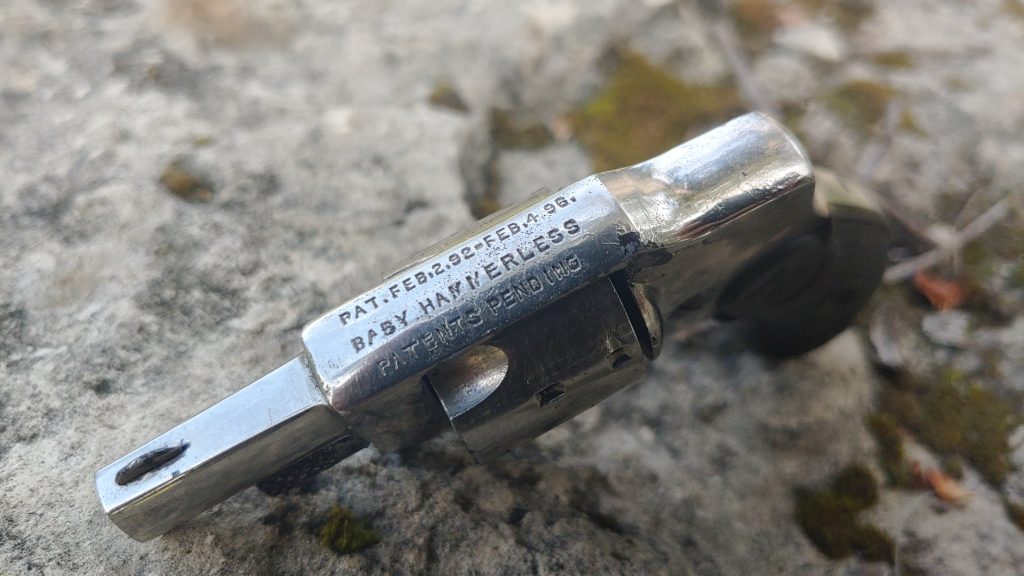
In a rather shady business move, the bankruptcy referee for Foehl & Weeks purchased the company and retitled it Columbia, and began producing firearms. They produced the same guns Foehl & Weeks produced and may have produced the first few super small 22 revolvers. Although this is unconfirmed and Columbia went out of business in 1898.
Henry Kolb came around in 1910 and began producing guns. He never occupied the same facility as Columbia, and there is no information he purchased their equipment or machinery. However, he began producing the Kolb Small Frame First Model, which was identical to the early versions of the gun that lacked a manufacturer’s mark. Foehl from Foelh and Weeks worked with Kolb, and the two took out patents on several of the mini-revolvers features.
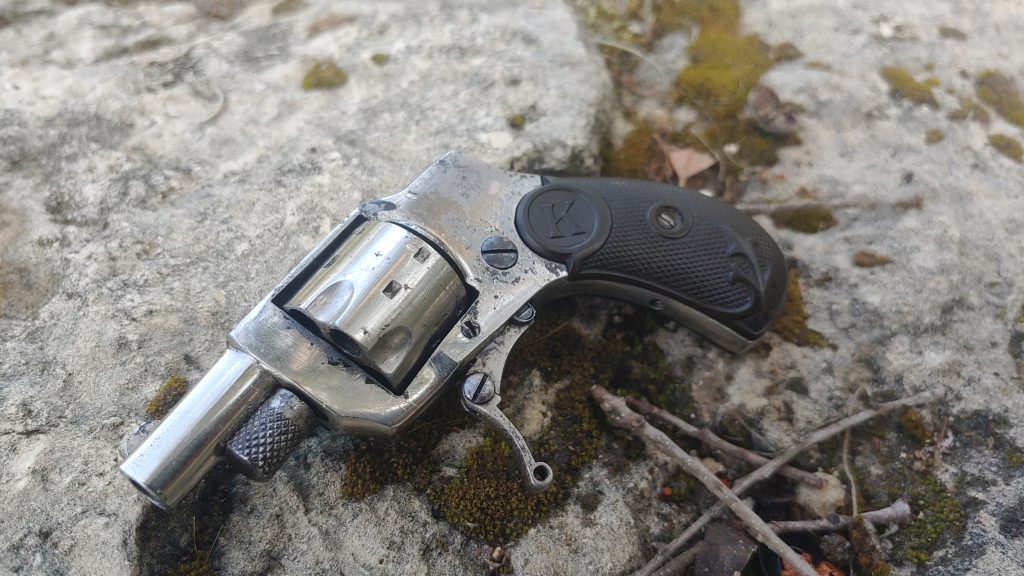
Kolb made the majority of these mini-revolvers. The smallest is my example, the Small Frame First Model. They also produced a Large Frame, but take Large with a grain of salt. It’s Large compared to the small, but it was still a pocket pistol.
The Little Kolb That Could
The Kolb Small Frame revolver was an interesting little firearm. The Baby Hammerless lacked a hammer and, like most hammer-free revolvers, had a pronounced humpback at the rear of the gun. These were double-action-only guns. The cylinders held six rounds of .22 Short and were tiny little guns.
A small loading gate allowed you to load the gun a round at a time, but the process to do so doesn’t reflect modern, safe gun handling procedures. To unlock the cylinder, you have to place a little bit of pressure on the trigger. This unlocks the cylinder and allows you to rotate and load the cylinder.
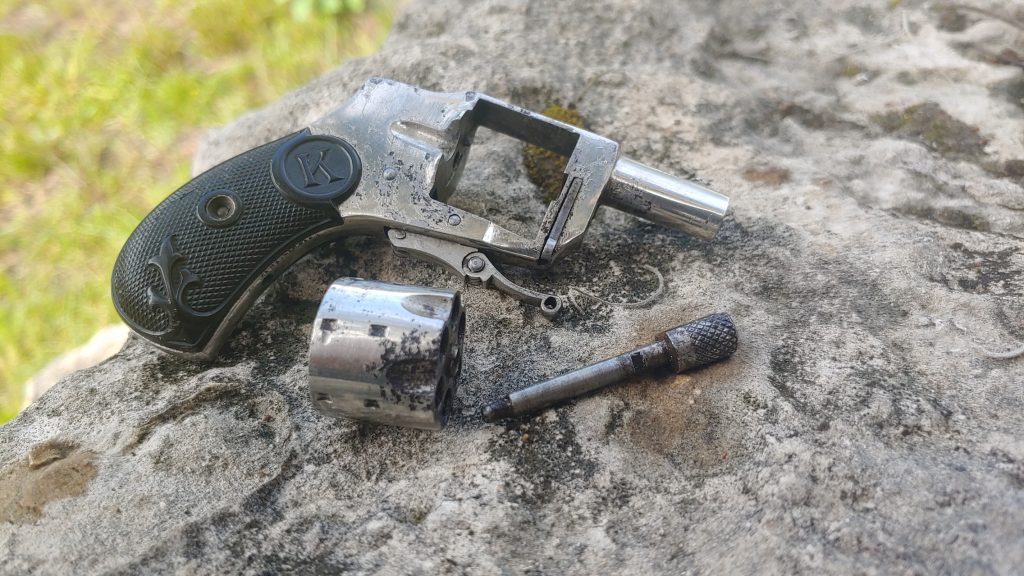
To unload (and safely load) the gun, you can just remove the cylinder. In front of the cylinder and on the frame sits a small release. Hit the release, and you can remove a pin. With that pin removed, the cylinder just pops out. The pin can also be used to punch out the spent rounds.
The trigger is rather interesting. It folds forward and out of the way, much like the old Velo Dog guns. The folding trigger and lack of a trigger guard make the weapon incredibly compact. It can squeeze into the coin pocket of my jeans.
The Kolb is 4.125 inches long, .8 inches thick, and 3 inches tall. It’s super small, and I could easily see it drop into a vest pocket. Across the front is a very optimistic front sight, but hey, it’s something to adorn the 1-inch barrel.
The .22 Short Conundrum
The gun was made for self-defense. It could disappear, be unseen, but heard when necessary. With that said, how much oomph does .22 Short offer? Well, not a whole lot. It most certainly lacks serious penetration and won’t reach established standards. The little 29-grain round moves at less than 1,000 fps from a decent barrel. I imagine it’s just chugging along from the 1-inch Kolb barrel.
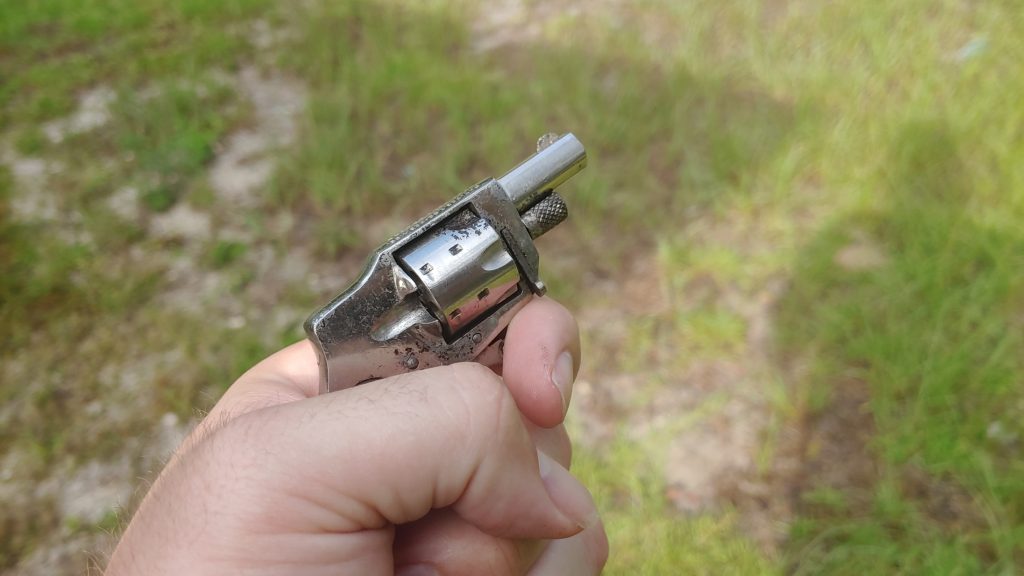
It certainly stings and could still be lethal. Even so, I wouldn’t trust the cartridge for anything more than squirrels. Even the .22LR runs laps around this cartridge. Although I probably wouldn’t want to shoot anything larger than 22 Short through the Kolb.
The cylinder gap sits right above your finger, and the Shorts produce such a little bang that it doesn’t singe your finger. It doesn’t get your trigger finger nice and dirty.
To The Range
This over-a-century-old gun isn’t a spring chicken, so I only fired 24 rounds through it. Impressively the gun fired every round without issue. They all went bang. It’s not quiet, but it’s got a cute burp to it. The little gun moves a slight bit, but there isn’t real recoil.
The trigger pull is a very long and heavy one. At ten pounds, it’s no Ruger LCR. It’s not exactly a great trigger, either. There is probably a ¼ inch of takeup before we get to the ultra-stiff double action.

Accuracy…well, if the bad guy was right in front of me and I jabbed it into his belly, I’d likely hit him. I exaggerate, but it’s not an exceptionally accurate gun. It doesn’t group…it patterns. Still, it’s a fun little gun.
I probably won’t shoot it much, but it’s a great conversation starter. The little gun is seriously cute and an interesting part of concealed carry history. Is it a great choice today? Oh no, but it’s an interesting curiosity.
The Known Assailant
Known Assailant violence outnumbers Stranger violence, and we got a good reminder from Ohio recently. A young man decided that the best response to a breakup in 2019 would be leave a creepy voicemail, and then show up at his ex’s house the following day (which apparently happened to also be her parent’s house) and start banging on the door. The father of his ex girlfriend announced to James Douglas Rayl that he was armed, and that James needed to leave.
Knowing this was someone his daughter had dated, and once cared for, must have given him plenty of incentive to let the guy go, and usually “I have a gun, GTFO” is enough to dissuade. However, duly warned, Mr. Rayl decided that rather than leave, he would attempt to shoulder the door in. Given the terrible quality of modern construction materials, it was unfortunately quite soon that the door began to give way. Police reports indicate that the deadbolt was locked, but the doorjamb failed. The father, watching this happen, made the terrible but ultimately justified decision to fire 3 shots through the decorative door window, which would prove fatal to Rayl.
Besides the best possible advertisement for up-armoring your door frames, this is a lesson many of us need to take more seriously: Per FBI UCR statistics, you’re way more likely to shoot someone whose name you know (a known assailant), than you are a stranger. Does any of your training take this known assailant risk into account? Have you ever sat down and really considered who among your acquaintances you could, or couldn’t shoot? Who might be the most likely candidate to earn the title?
These aren’t fun or easy questions, but if you go by the numbers, it’s a lot better to have considered them now, than in the moment when your cousin’s high school friend shows up in your hallway with a bat because he heard said cousin talking about the pair of new SOLGW rifles you just bought. Being surprised by an assailant is always a poor way to start a lethal force encounter, but being surprised, and having you OODA loop blown apart because that assailant is someone you know or at least recognize. Now is the time to think about known assailant encounters, not in the moment when you’re scrambling to process the situation and react appropriately.
REASON: Are the Media Making Mass Shootings Worse?
The short answer is, probably.
REASON has a 12 minute video here exploring that hard question but the numbers are chilling on it. I know that as we cover mass shootings too, they’re horrific events that do need coverage and exploratory examination.
Unfortunately, that coverage is also part of what is sustaining the problem.
The absolute tsunami of attention that is given to these events is intoxicatingly seductive to the attention starved, isolated, violent, and disassociated individuals who are most likely to carry out an attack. The coverage, the amount of people who will be talking about them, is an ultimate high that cannot be replicated outside that extreme outburst of violence.
Sure, we universally cover it as horrific. But the negative coverage isn’t a deterrent because the sheer volume of coverage is the incentive. These people do not, or have stopped, judging life by the positive average that most people do. People, by default, place some value on life. Some life, at least, usually most prioritizing theirs, then their close family and friends, and then assigning a neutral but positive value to people in general.
But that scale is broad, there are people who do not prioritize the continuation of any life, except usually their own. There are far more people who will put no more effort into the sustainment of life than voicing aloud that they’d rather not see bad things happen to people. The percentage of the population who will actively engage and do something, often titled active responders, is lower than we like to imagine. Even some first responders aren’t active responders, despite it being their job.
So while the population as a whole is unlikely to be influenced negatively by this coverage, the population is also rather lackadaisical in the grand scheme. They rely on the efforts of others whose ‘job’ it is, because it certainly isn’t theirs.
Meanwhile, the coverage is like the universe’s greatest hit of methamphetamine to a very small and very dangerous group of addicts who fall into a perverted category of active responders. Those who will use their faculties to destroy and get that high. Some may regret it, at least a little, afterward but that is too late, damage done. The temptation, the motivation, the event are already triggered. The past coverage and knowing the coverage will come is firmly emplaced in their minds and no other possible outcomes, nor the condemnation of the populace, matter in the slightest.
There is no replacing the need to cover world events, but it is also absolutely fueling the rare fires who crave this sort of macabre attention.
Anti-Gun Bill So Bad CA Won’t Accept It
What precisely it was that the California legislature, and their anti-gun proponents hoped to accomplish with this bill is still unclear. It plainly places restrictions on carry that have been outlined by the supreme court as unconstitutional as recently as 70 days ago, and was fated to die in court the moment it was conceived. Virtue signaling to voters is apparently the way to get re-elected nowadays, so it perhaps shouldn’t be surprising that this is going on, but we’re still impressed every time it’s this blatant.
Moms Demand Action were quick to take to twitter with their own hot take on the issue, with the decidedly Anonymous style hashtags #Novemberiscoming and #Expectus, seemingly suggesting that those who voted against this crusade to die gloriously in court after wasting taxpayer money pushing an obviously unconstitutional law were going to get voted out for their prudence and sensibility. It’s good for fundraising though, I suspect. Californians get to pay this anti-gun org to push legislators to pass a law that will then cost Californians even more money to defend in court, through appeals, and into its inevitable death. If we were more cynical, we might start our own grift to profit off of, and bankrupt people we hated too, but MDA and other anit-gun orgs seem to have that market cornered.
Anti-gun orgs and politicians will likely attempt to use this as proof that their liberty minded opposites are standing in the way of the will of the people, because who would oppose “common sense” gun laws, after all?
The Behlert Model 39 Mini Combats
The art of gunsmithing seems to be mostly lost these days. I mean real independent gunsmithing, from the days of custom 1911s and crazy cut-down firearms like the ASP. It’s sad to see, and I think the 1970s established gunsmithing as an art and that a gunsmith could take a gun and make it exactly how you wanted. These days gun companies seem to produce so many different models it’s tough not to get exactly what you want. One legendary gunsmith that you should know is Austin Behlert.
Austin Behlert was a master gunsmith, and his work was something of an art form. The Behlert guns were absolutely gorgeous guns, and he customized Hi Powers, K-Frames, 1911s, and S&W Model 39s and 59s. Today we are more or less going to focus on the Model 39 guns. In the 1970s, the Model 39 was a popular choice with master gunsmiths.
Specifically, these smiths liked to trim the guns down to a smaller, more concealable size. At this time period, small automatics were in calibers like .22LR, 32 ACP, and maybe .380 ACP. If you want something potent, you went with a j-frame. A small 9mm wasn’t a thing, at least from the factory. So companies like Devel, ASP, and Behlert made them.
Devel and ASP are very well known for their trimmed-down Model 39s, and Devel did do smaller 59s as well. Behlert turned nearly everything into a Mini Combat, as he called them.
The Behlert Mini Combat S&W Pistols
The Model 39 and 59 were both 9mm handguns that were fairly popular in the 1970s. The 39 was a single stack, and the 59 used a double stack magazine. The 39s modified to use 14-round magazines were popular with SEALs in Vietnam, and some were eventually turned into Hushpuppy pistols. These modified 39s eventually became 59s.
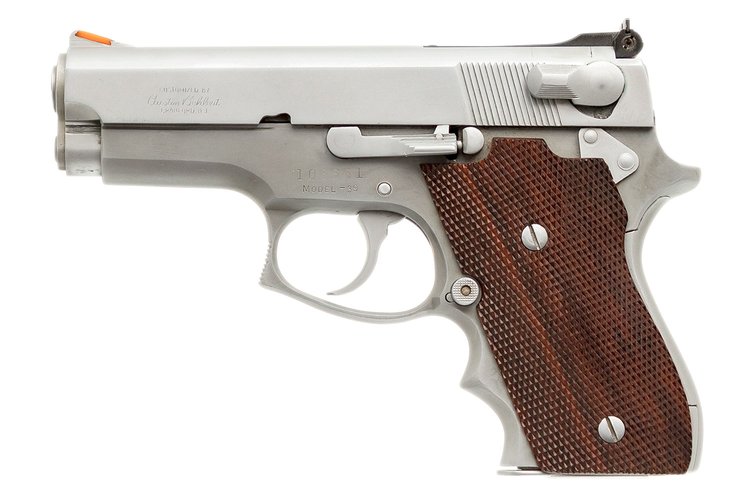
These were both full-sized pistols. They were DA/SA, hammer-fired guns with the 1970s design we all know and love. As we know it now, the 9mm round does fairly well from short barrels and is easy to control. This made them natural adaptions for men like Behlert to turn into compact fighting pistols.
Making Behlert Mini Combat Guns
Behlert trimmed the frame, slide, and barrel of the Mini Combat pistols to reduce their overall size. You could just fit most of your hand on the grip. Austin trimmed the barrels to 3.5 inches. The package included a bobbed hammer to increase concealment. The trigger guard is reshaped and slightly squared with a slight hook to it.
Rear sights were often pushed to the rear as far as possible to increase the sight radius. The rear sight would be adjustable, and the front sight rounded and reduced. The front sight wore a bright orange insert for quick sight acquisition. Edges of the slide were melted and rounded.
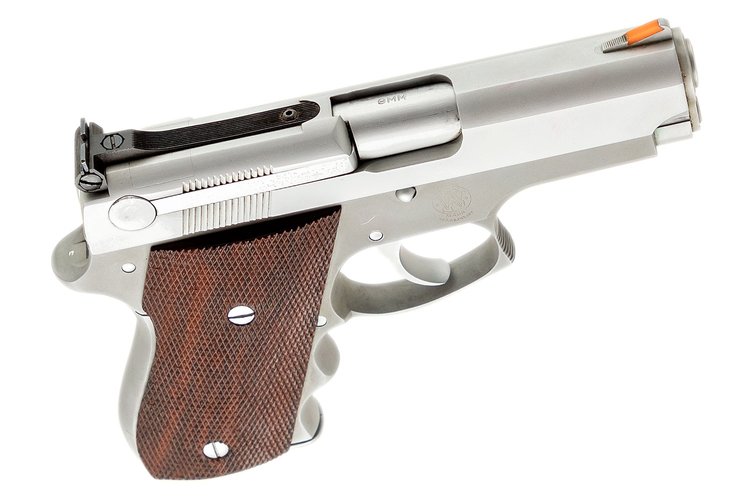
One of the most eye-catching changes is the addition of finger grooves. He seemingly carved them into the steel of the gun. While I’m not a finger groove fan, I am impressed by the work. They are sharp finger grooves that look like they held your hand on the little grip. At the rear, Austin trimmer the beavertail and rounded it for easy concealment.
The trigger is reportedly wonderful. There isn’t a ton of information out there on these pistols. However, in researching this article, I found one constant comment: how nice the triggers were. Specifically, the double action trigger is reportedly wonderful, and a man who owned a Devel, ASP, and Belhert Model 39 commented that the Behlert had the best trigger.

These upgrades were a little less flashy than the ASP or Devel but impressive nonetheless. These guns are gorgeous, and
The Legacy
Sadly Austin’s Custom Gunshop closed upon his passing. He originally aimed to pass the shop down to his son-in-law, but his son-in-law lost his battle with cancer. Austin Belhert’s legacy is on fine work and master gunsmithing. He also frequently posted on the pistolsmith.com forum. His stories are wonderful, and it’s worth a read if you want inside knowledge on an age of guns and gunslingers lost to us.
SIG Sneaks in the Littler, Lighter SPEAR
With the launch of the M5 and M250 we saw that SIG had mapped out several updates to the MCX line. The VIRTUS was their generation 2 and offered significant improvements over the 1st generation. Most notable was the handguard, the original MCX handguard wasn’t rigid at all and the was problematic for mounting zeroables.
The SPEAR LT appears to be all that again and a little more. All the nice creature comforts we’ve seen on the SPEAR, namely trigger, full ambidexterity, and handguard, all brought to the shorter action platform. No, it isn’t a side charger. So if you like that feature you’ll need to await the full SPEAR.
Mike and several others all dropped videos on the updated rifle, it is further proof that the future holds three rifles primarily. The AK, the AR-15, and the AR-18. To be fair SIGs, production and update style nearly rivals tech companies.
The new iOS is dropping? The new 365 updates are too!
Steam just pushed a massive platform update? New MCX Time!
WordPress dropping new features and rearranging everything? That’s just a day ending in Y actually, SIG doesn’t go that mad lad with their items.
I’m ordering a LT, I’m a sucker for service carbines in FDE.
Grand Thumbs video in the meantime.
Sig Sauer at National Rifle League Hunter Finale
The NRL Hunter Grand Slam presented by Sig Sauer was held in Hammett, Idaho on August 19-22. Multiple vendors set up tents during sight in day. Some of the vendors who attended were Sig Sauer, Nightforce, Proof Barrels, Defiance, and Leupold. Independence Training also held a “Stop the Bleed Course” and provided certification to those who attended and passed the course.
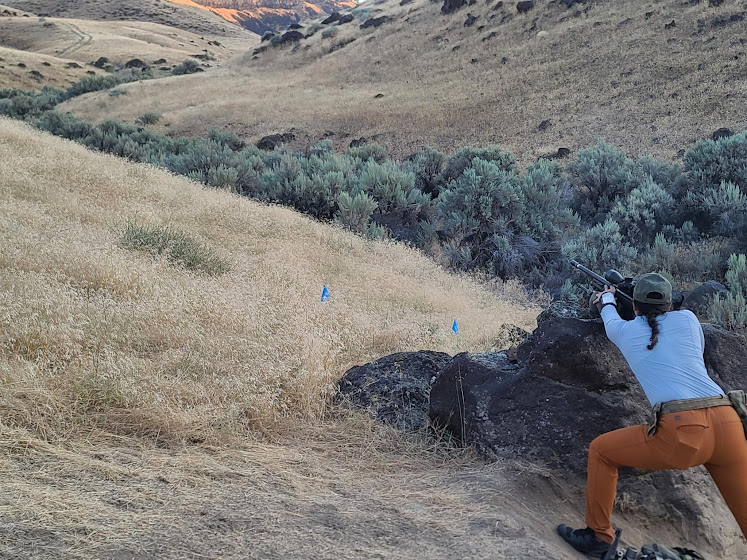
Three of the vendors, Sig Sauer, Nightforce, and Independence training set up side stages during the match. This was a cool concept due to while it didn’t count for score vendors got to show off their products and if you participated you would be entered into a raffle.
Sig Sauer showed up with three of their newest products and gave a magazine of ammo to shoot at two steel targets. Below are some key features and some takeaways after putting a few rounds through them.
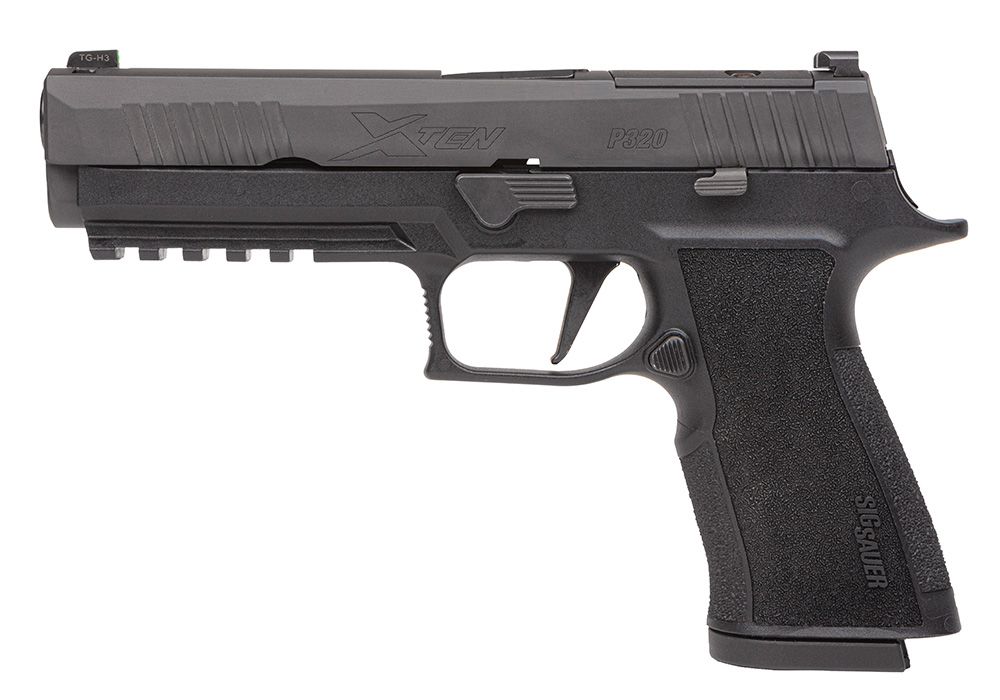
“The latest addition to the SIG P320 family brings all of the features of the XSeries into a carry style handgun in 10mm for shooters and hunters looking for performance to the power of 10.”
Features:
- Optic Ready Slide compatible with Romeo2 and Trijicon RMR (requires sealing plate)
- 5” Bull Barrel
- All-new XSeries 10mm/45 Auto Grip Module
- Flat XSeries trigger with 90-degree break
- Front and Rear Serrations
- XRAY 3 Day/Night Sights
- (2) 15rd Steel Magazines
- Picatinny Rail
Before we go into my experience shooting 15 rounds during the Sig Sauer Side stage let’s go over the X-series grip which is a big proponent to why this gun shoots so well. The redesigned X series polymer grip module is made with a beveled magwell, newly designed undercut of the trigger guard and beavertail, and comes fully stippled. The grip is very small and manageable so while it doesn’t feel like a 10mm the angle of the grip allows enough meat to be in your hands but still having the ability to control it.
The XTen without RDS was the first firearm they handed off to shoot. Honestly I have shot the Glock 20 and while it wasn’t uncomfortable to shoot, it definitely wasn’t a 9mm. Being handed the X-ten I was a little nervous and I voiced that. However, I had no reason to be. It shot like a 9mm. Sig even stated that if they don’t tell the consumer it is a 10mm before firing the consumer automatically thinks it’s a 9mm. It was ringing steel with easy follow up shots, there was zero hot spots on the hand, and the irons lined up easy. The only drawback was that I wasn’t strong enough to hit the slide release and had to slingshot it, however Sig stated that many others had issues with it just due to this particular gun being brand new. The standard P320’s also have this problem, they are just super stiff when first starting out.
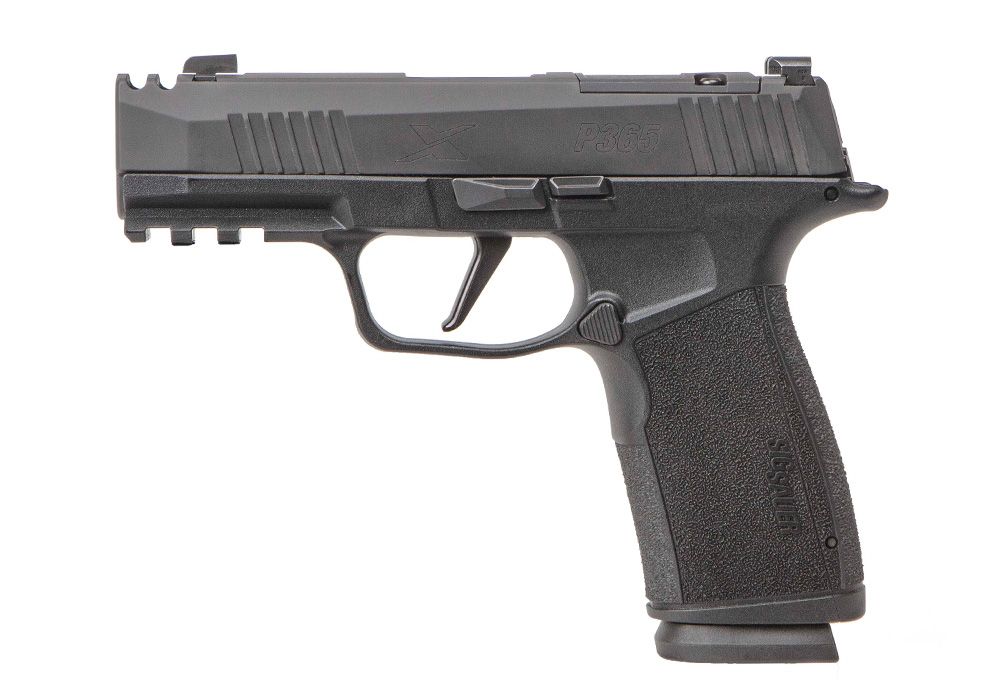
“With an innovative new magazine design the P365-XMACRO packs a full-size 17+1 round capacity into the thin, iconic profile of the P365.”
Features:
- All-New Macro-Compact Grip Module Featuring Standard 1913 Rail
- Integrally Compensated Optic Ready Slide
- (2) 17rd Steel Magazines with High Visibility Followers
- Interchangeable Small, Medium, and Large Backstrap Included
- 3.1″ BARREL
- XRAY3 Day/Night Sights
- Compatible with SIG SAUER ROMEOZero
From a previous article on the Sig P365-XMacro..
Quick takeaways
For those who don’t want to look it up, it’s pretty much the same size as the G48, a smidge taller and slide a scoshe shorter (very scientific measurements), with +2 rounds (over shield magazines, +7 over factory), with an integral comped slide instead of a 4″ barrel. It’s rocking the 3.1″ barrel of the P365/P365X, hence X Macro and not XL Macro. -Keith Finch
The next gun they handed off was the P365-XMacro. Coming from a person who carries a Sig P365 each day with RDS I was very intrigued about this gun. For me the plusses already before shooting it was that it is optic ready and 17+1. After shooting it I came away with two more plusses. The integrally compensated slide made this a very flat shooting gun with no need to worry about another piece, cleaning included. The redesigned magwell and magazine compared to the 365 made it feel a lot more natural in my hand and loading mags quickly was a lot easier. The grip on the 365 is shorter so often your palm can get in the way of reloads. Due to the XMacro having a longer and straighter magwell the reloads were night and day. Even compared to the XL, the Macro is a lot more ergonomically sound when it comes to the grip module.
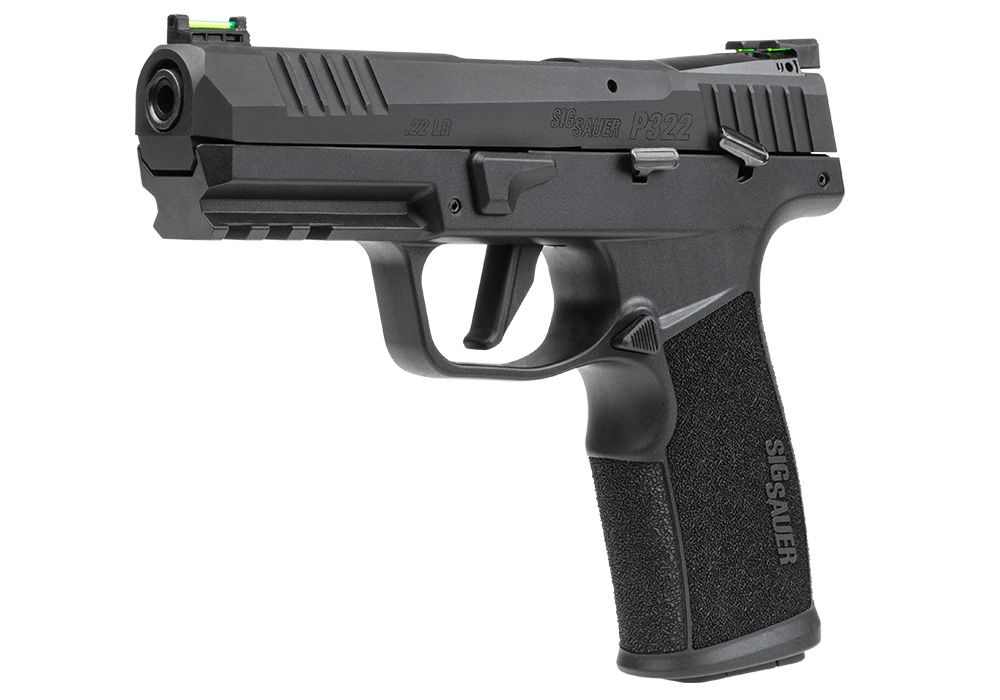
“The highest capacity, most advanced 22 pistol in its class.”
- 20 Round Magazine Capacity
- Optic Ready Removable Rear Sight Plate
- Suppressor-Ready With Included Threaded Barrel Adapter
- Interchangeable Trigger Shoes (flat and curved included)
- Fiber Optic Front and Rear Sights
- Ambi Controls With Reversible Magazine Catch
- Magazine Loader Included
- Includes (2) 20rd magazines
While I didn’t get to shoot the P322 they did have it on the table with a suppressor installed due to it coming suppressor ready with threaded barrel adapter included.
.22 pistols can be tricky just due to weight. A big thing with the P322 is that it doesn’t need two different slides when running it with an optic or not. According to Sig Sauer, the P322 has ran multiple .22 ammo both with RDS and without and had no issues. While I LOVE my Taurus TX22 I did have to go through hell and highwater to find an optic ready slide in stock that was milled out and weighted to run a red dot efficiently.
Hate Snakes But Love The Environment? This One’s For You!
https://phys.org/news/2022-08-pythons-florida-profit-therapy.html
In what may be the strangest combination of topics we’ve published in recent years, the article linked above details how GWOT veterans, earn money, help the environment, and work out their trauma by rounding up snakes (Burmese Pythons specifically) for fun and profit at a 10-day python hunting contest. Yes, that was all in one sentence, and it’s a lot to process but it’s a very cool story.
Burmese Pythons are not something you’d normally expect to encounter in the US, a minimum of 6700mi from their native range. But as with all things, Florida has to be special, and the best guess is that some likely well-meaning snake owners released their pet when it started getting too big to handle. Now these monster snakes that can reach over 23′ long, 200lb, and can be as big around as a telephone pole are taking over the everglades. They’ll eat anything they can catch, including alligators and even whitetail deer, and the damage they are doing to the ecosystem is immense.
So the Florida Fish and Wildlife Conservation Commission (FWC) holds an annual contest to see who can bring back the most snakes, with a grand prize of $2500 in both Professional and Amateur categories. Yes, Florida recognizes Snake Hunter as a profession. If you’ve got an eye for spotting wildlife, a wallet begging for money, and a desire to wrestle with what is basically a two-dozen foot long, living thigh muscle that can swallow you, this may be the break you’ve been waiting for!
The Devel Pistols – A Refined Concealed Carry 9mm
In 1976 a gunsmith from Cleveland, Ohio, placed an order for an ASP pistol. The ASP pistol was a design made by Paris Theodore that was a very heavily modified S&W Model 39. Paris and his team designed the weapon to be as concealable as possible and smooth for an easy draw and for deep concealment. The man, Charles Kelsey, must have appreciated the craftsmanship. Sadly he never received his ASP, which created a competitor known as the Devel pistol.
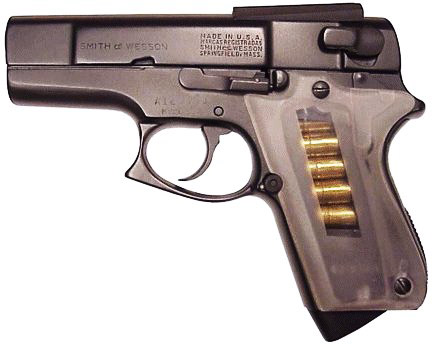
Charles Kelsey must’ve been a little annoyed at not receiving his ASP. Still, he wanted one and was a gunsmith, so why couldn’t he just make one? Charles Kelsey teamed up with legendary firearm instructor Ken Hackathorn to create something known as the Devel pistol. It’s worth noting that there weren’t many micro 9mms on the market. Most small autos were .22LR, .25 ACP, 32 ACP, and .380 ACP and were typically made by Walther and Beretta.
This was an untapped market. Charles Kelsey might not be well known these days, but he is a rather impressive gunsmith who did a number of modifications to firearms like the Hi-Power that are well regarded. Devel became the company that fronted the gunsmith.
The Devel Pistol
Charles Kelsey designed the Devel pistol to both compete with ASP and to improve upon the idea. He didn’t just want to make an ASP clone but to produce a high-quality pistol that would improve upon the idea of an ultra concealable 9mm pistol. While the ASP used an S&W 39, the Devel would use both a Model 39 and the double stack Model 59.
Kelsey would shorten the barrel, frame, slide, and grip. They’d have to trim the magazines to match as well. This reduced the Model 59’s capacity from 14 to 10 rounds, and the Model 39 featured an 8-round magazine.
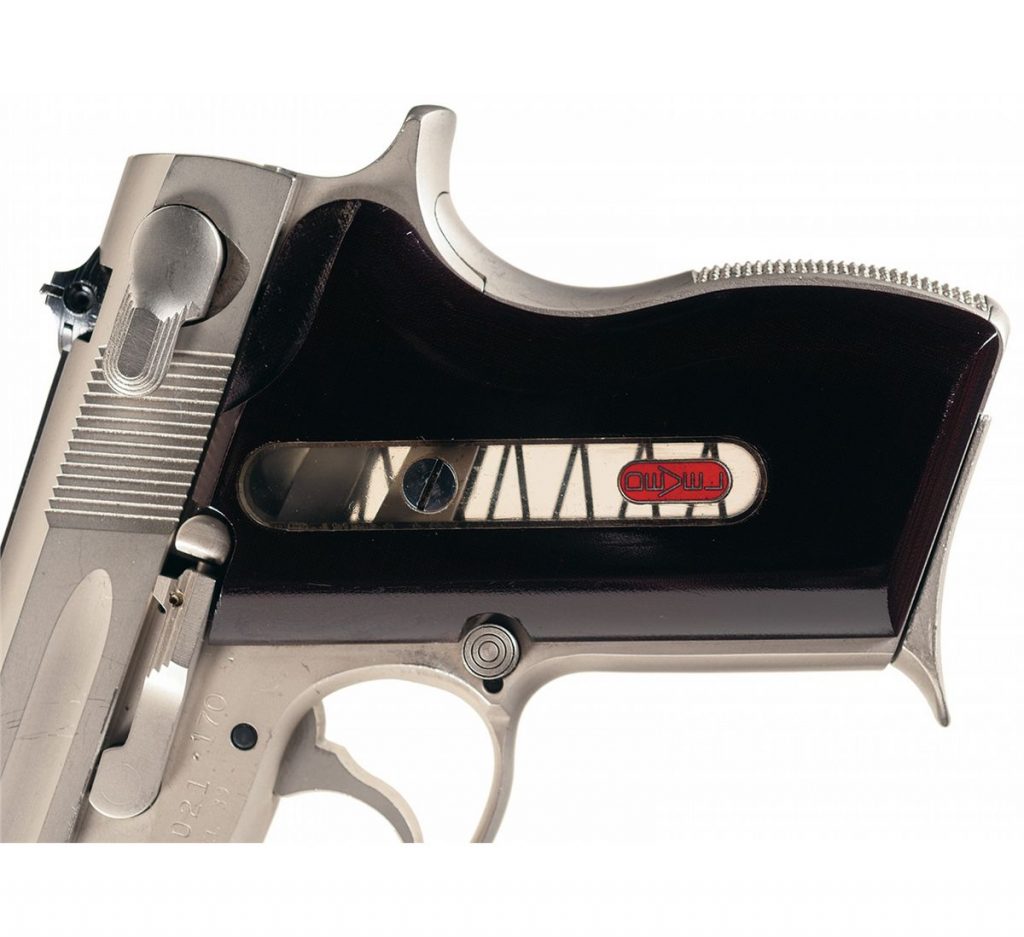
Devel pistols feature micarta grips with a see-through window to allow the user to check their ammo supply. The slide was fluted to reduce weight, and it’s honestly a striking appearance. The barrel bushing is redesigned as a fixed part of the slide, which reportedly improved accuracy and reliability.
Kelsey would use an improved spring because the little gun was much different than the bigger versions. The front sight is ramp style that’s bright red for easy visibility. The hammer is despurred for extra smoothness. The magwell was funneled for faster reloads. The mainspring housing was completely replaced and not just a reworked device.
Devel pistols featured an enhanced magazine release as well as a checkered lower backstrap. The trigger guard was reworked with a hook added to it. Additionally, the gun features a bit of a relief cut into the trigger guard to encourage two-handed shooting. The safety was swapped to an ambidextrous design, and the magazine disconnect was removed.

In Real Life
The above description represents a Full House Devel pistol. A number of more affordable options are available with fewer fancy features, but the Full House understandably gets all the attention.
After all these cuts and clean-up, you get a beautiful pistol. While the ASP pistols were functional, they wouldn’t win a beauty contest. Devel pistols were functional and gorgeous. These guns were very highly regarded, but only a few hundred were created. Like the ASP, you sent Devel a Model 39 or 59, and they produced a Devel pistol.
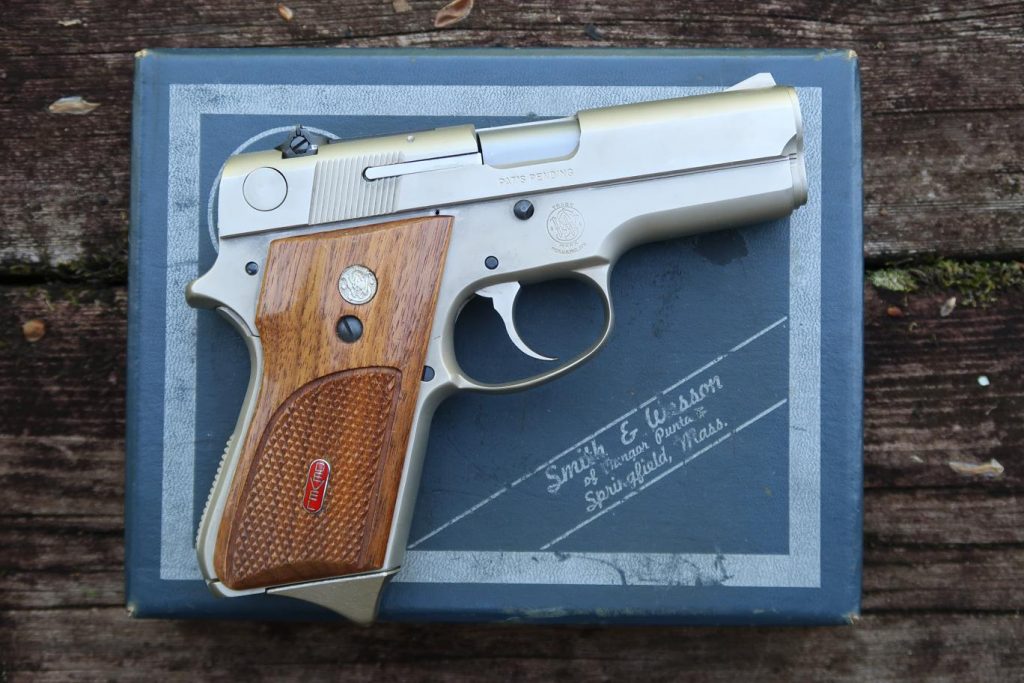
If you take a peek at the Kelsey pistols and then look at the S&W Third Gen guns, you will see some very familiar features. In fact, I would argue an S&W 3rd Gen looks more like a Devel than an S&W 2nd gen. Look at the 3913. It’s a less fancy version of the Devel gun.
The trigger guard on the 4506 looks like Charles Kelsey designed it…because he likely did. Several certified gunslingers own the Devel pistols. Specifically, Rex Applegate owned one, and it’s a beautiful pistol.
The End of Devel
Eventually, the company folded. He designed and produced an 8-round 1911 magazine, and the magazine ended up failing. Charles Kelsey was an honorable man and spent a fortune refunding those customers with bad magazines. Devel had designed some 1911s and custom Hi-Powers as well that are very well regarded.
Charles founded a second company called Leved to work on some small projects, but sadly he is no longer with us. If you’d like to see some of Devel’s guns, check out the Novak website. Wayne Novak is probably the premier Devel collector, and his website has some beautiful photos of Devel pistols.
Sadly the Devel guns just aren’t as well known, and they deserve some credit. The Devel guns had a number of features we still see popping up today.
Gunday Brunch 69: Nice
Welcome to the nicest episode of Gunday Brunch you’ll ever hear. We’re just nice to everyone on this one, except for people who think the 2011 makes a good duty gun. Caleb goes in on those guys a bit.

